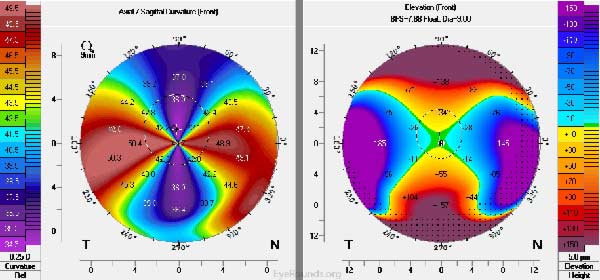
Yamawo A (2009) The defense strategies of Mallotus jaonicus. Arg., a common pioneer tree of secondary succession in temperate Japan. Washitani I, Takenaka A (1987) Gap-detecting Mechanism in the seed germination of Mallotus japonicus (Thunb) Müell. Wagner D, Nicklen EF (2010) Ant nest location, soil nutrients and nutrient uptake by ant-associated plants: does extrafloral nectar attract ant nests and thereby enhance plant nutrition? J Ecol 98:614–624 Strauss SY, Rudgers JA, Lau JA, Irwin RE (2002) Direct and ecological costs of resistance to herbivory. Sirikantaramas S, Yamazaki M, Saito K (2008) Mechanisms of resistance to self-produced toxic secondary metabolites in plants. Schmelz EA, Alborn HT, Engelberth J, Tumlinson JH (2003) Nitrogen deficiency increases volicitin-induced volatile emission, jasmonic acid accumulation, and ethylene sensitivity in Maize. Olson DM, Cortesero AM, Rains CG, Potter T, Lewis WJ (2009) Nitrogen and water affect direct and indirect plant systemic induced defense in cotton. Lou Y, Baldwin IT (2004) Nitrogen supply influences herbivore-induced direct and indirect defenses and transcriptional responses in Nicotiana attenuate. Katayama N, Suzuki N (2011) Anti-herbivory defense of two Vicia species with and without extrafloral nectaries. Herms DA, Mattson WJ (1992) The dilemma of plants: to grow or defend.

Heil M, Hilpert A, Fiala B, Kaiser W, bin Hashim R, Zotz G, Strohm E, Linsenmair KE (2002) Nutrient allocation of Macaranga triloba ant plants to growth, photosynthesis, and indirect defence. Heil M, Fiala B, Kaiser W, Linsenmair KE (1998) Chemical contents of Macaranga food bodies: adaptations to their role in ant attraction and nutrition. Heil M (2010) Plastic defence expression in plants. Oecologia 56:348–355įolgarait PJ, Davidson DW (1995) Myrmecophytic Cecropia: antiherbivore defenses under different nutrient treatments. J Chem Ecol 27:1979–1996įield C, Mooney HA (1983) Leaf age and seasonal effects on light, water, and nitrogen use efficiency in a California shrub. Science 230:895–899Įck G, Fiala B, Linsenmair KE, Hashim RB, Proksch P (2001) Trade-off between chemical and biotic antiherbivore defense in the South East Asian plant genus Macaranga. Annu Rev Plant Physiol 27:305–335Ĭoley DP, Bryant JP, Chapin S (1985) Resource availability and plant antiherbivore defense. Ecology 90:2384–2392Ĭoley DP, Barone JA (1996) Herbivory and plant defenses in tropical forests. Oecologia 73:513–517Ĭhamberlain SA, Holland JN (2009) Quantitative synthesis of context dependency in ant-plant protection mutualisms. Oikos 40:357–368īryant JP, Clausen TP, Reichardt PB, McCarthy MC, Werner RA (1987) Effect of nitrogen fertilization upon the secondary chemistry and nutritional value of quaking aspen ( Populus tremuloides Michx.) leaves for the large aspen tortrix ( Choristoneura conflictana). Ecol Lett 5:377–385īryant JP, Chapin FSIII, Klein DR (1983) Carbon /nutrient balance of boreal plants in relation to vertebrate herbivory. Am J Bot 91:1990–1997Īgrawal AA, Janssen A, Bruin J, Posthumus MA, Sabelis MW (2002) An ecological cost of plant defence: attractiveness of bitter cucumber plants to natural enemies of herbivores. japonicus use different defence modes in response to different soil nutritional conditions.Īgrawal AA, Spiller DA (2004) Polymorphic buttonwood: effects of disturbance on resistance to herbivores in green and silver morphs of a Bahamian shrub.

These results suggest that young plants of M. They produced abundant EFNs and pearl bodies, and attracted many ants. Under the high soil nutritional condition, in contrast, the plants strongly expressed the indirect defence traits. Under the low soil nutritional condition, plants strongly expressed the physical defence by trichomes and chemical defence by pellucid dots, meaning that the young plants adopted direct defences under the poor soil nutritional condition. To evaluate the effect of soil nutrients on multiple plant defences, we cultivated Mallotus japonicus under three soil nutritional conditions in the field, and experimentally examined the expression of a physical defence trait (trichomes), chemical traits (pellucid dots), and biotic traits (extrafloral nectaries (EFNs) and pearl bodies) of the plants, and the number of ants visiting them. Although soil nutrients can influence the defence strategy of plants that have multiple defence traits, to date, there have been few studies to examine this.


 0 kommentar(er)
0 kommentar(er)
